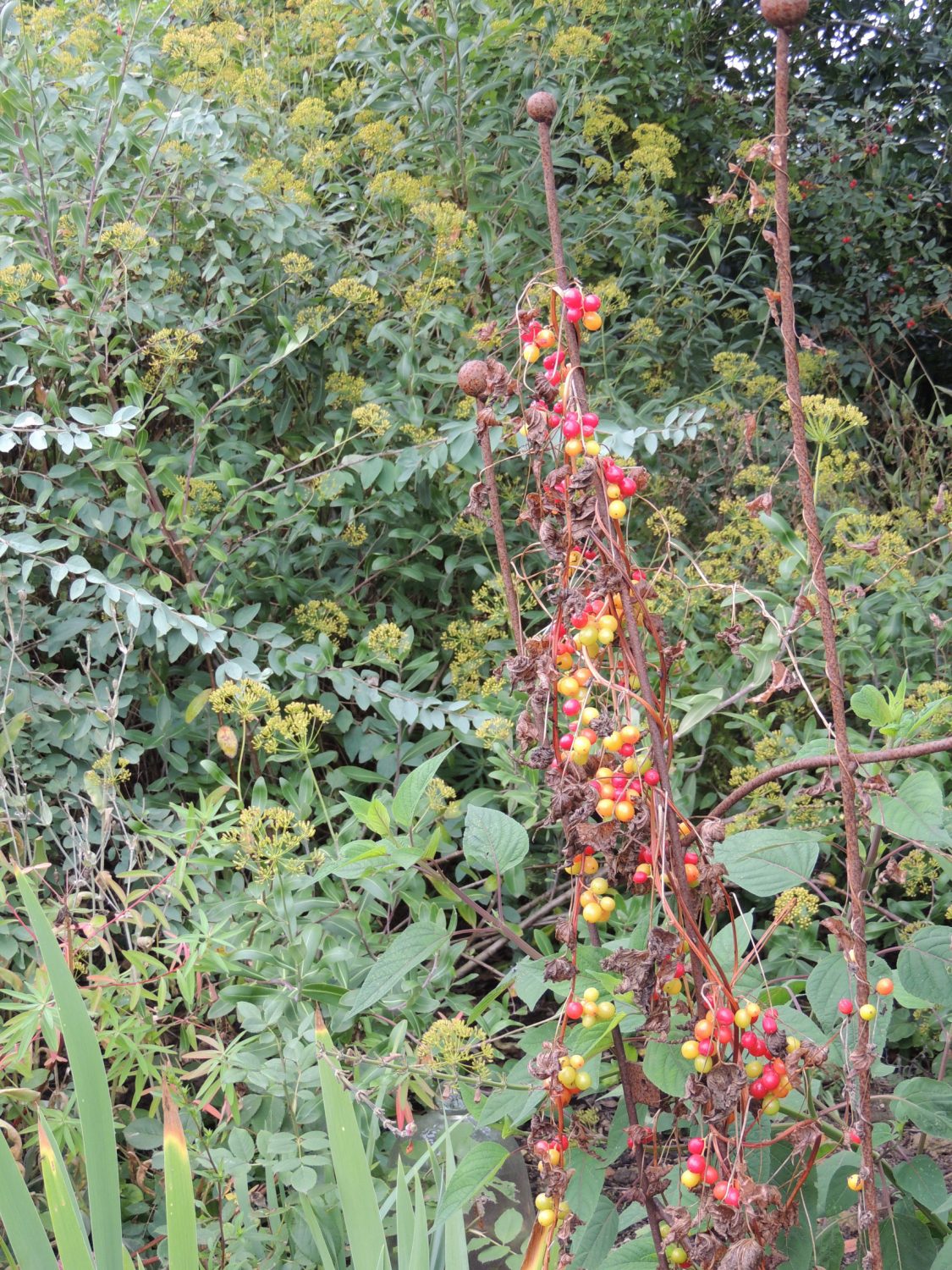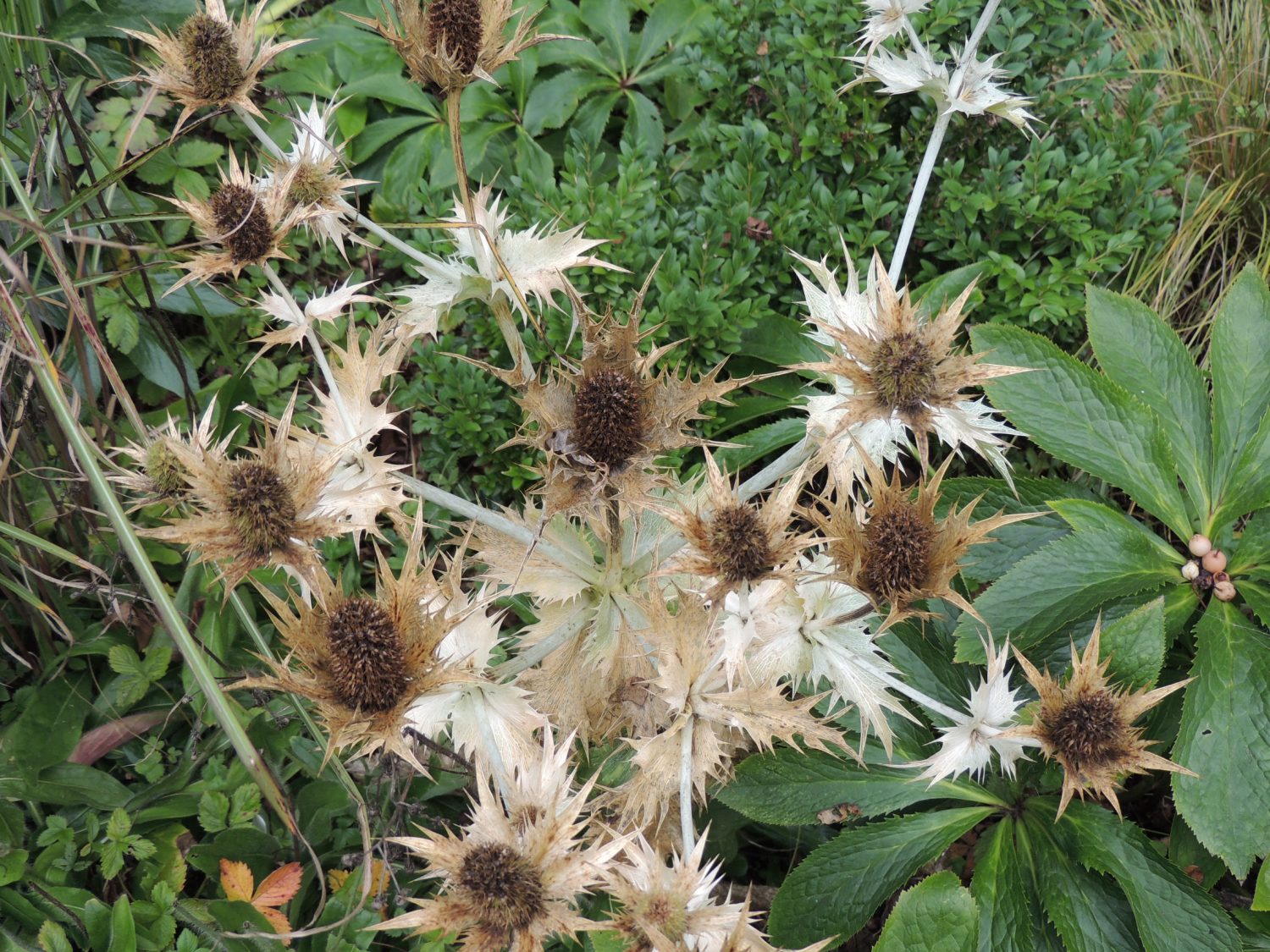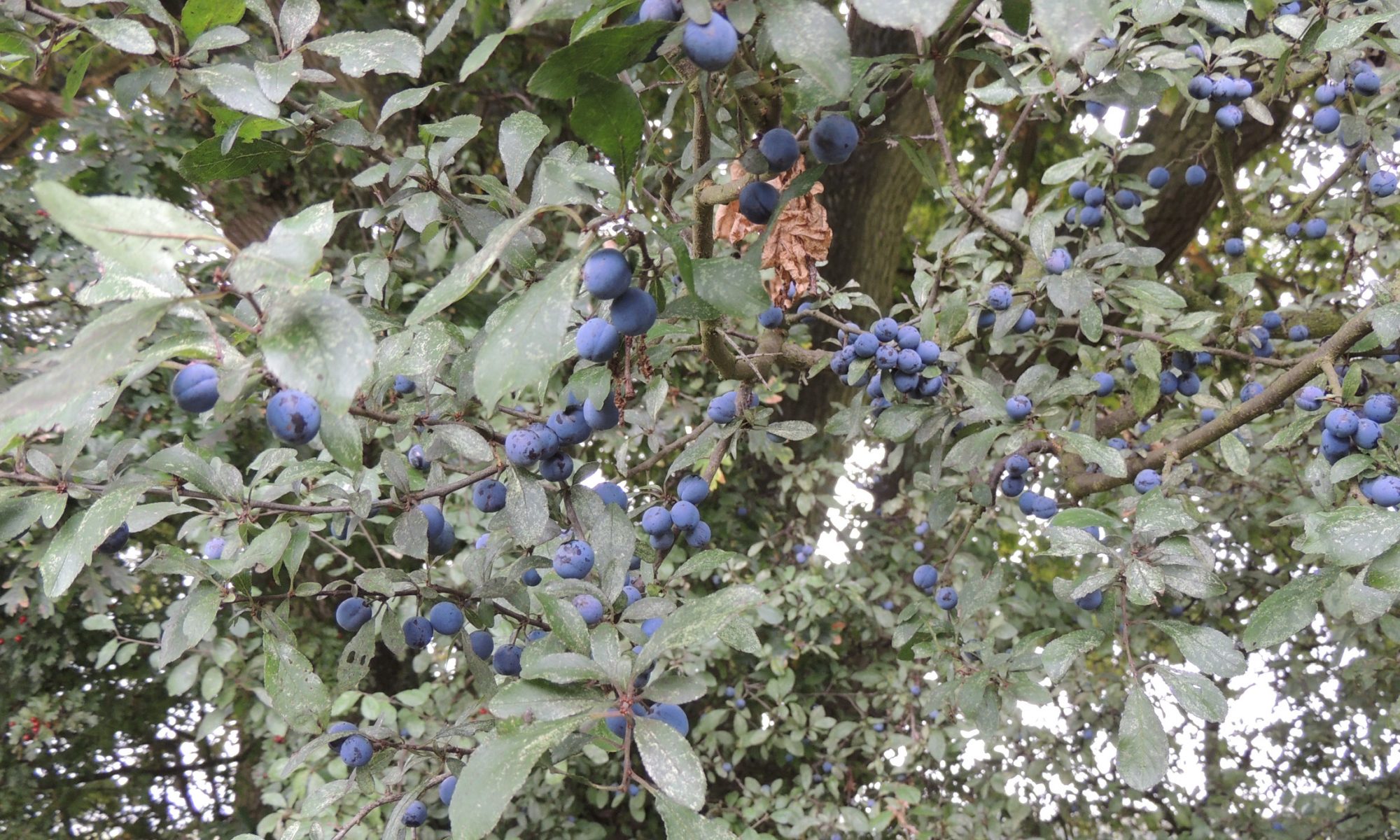I’ll be honest, I do sometimes go round the old fencing around the perimeter of my garden trying to find out how those wily badgers get in. And of course at this time of the year, there is always evidence of their midnight feasts in the orchard. So I’m not sure that I’m always practising what I preach as when the apples have gone, they have a nasty habit of digging up the lawn in search of chafer grubs and leaving it looking like a rugby pitch which is pretty frustrating. But Brock aside, there are so many other aspects of wildlife friendly gardening that we can consider and it is so heartening to see that the national ‘trend’ is towards less tidy gardens, leaving unmown areas and planting for the huge diversity of wildlife that we have in this country. And doesn’t it lift the soul to see butterflies and birds around us getting on with their lives.
Wild Kent, the magazine of the Kent Wildlife Trust, recently had the results of a Wildlife Garden competition in it and it was so interesting to see the different sorts of garden the winners created. From a boggy garden in a new build development to a tiny London plot four metres wide, from school gardens, to allotments and patches of industrial land – in this case, an old cement works now home to kestrels, green and goldfinches as well as all sorts of invertebrates and small mammals. All of these provide inspiration to us to feel that we can do the same. As the KWT says, this isn’t lazy gardening, but just a more relaxed approach to sweeping up and keeping things too tidy can pay dividends as far as providing habitats for wildlife is concerned.
Hedges… We could start with our perimeters. Go native and plant a ‘native mix’ hedge. Incredibly reasonable to buy as bare rooted plants in the autumn, and a good combination of hawthorn with its glorious berries, guelder rose, holly, honeysuckle, field maple and sloes is so preferable to the leylandii (the cause of so many neighbour disputes) and soulless laurels that unfortunately are used as hedging. And let a few brambles grow through the hedge to give both you and the birds blackberries to share in September as well as encouraging butterflies such as the Browns. Apart from providing food for both birds and bees as well as nesting sites, hedges provide a means of getting around, a safe corridor if you like, as well as shelter for small mammals which, of course, provide food for creatures such as barn owls.
Climbers… Climbers too provide shelter and nesting sites on any vertical surfaces you may have in the garden. Create a wildlife habitat on a shed, your house, an old tree stump. The much maligned ivy (Hedera helix) is a fantastic plant for wildlife. Wrens, butterflies and hoverflies use ivy as a food source as their nectar-rich flowers are available so late in the season. And of course the flowers are followed by clusters of purplish black berries. It doesn’t suck the life out of its host tree, contrary to myth, and is worth encouraging.
Choose climbers that are full of nectar, pollen and then fruit. The native honeysuckle (Lonicera periclymenum) produces an exceptionally fragrant pale yellow flower followed by clusters of sticky, shiny red berries. The shiny red berries of black bryony (Tamus communis) too, which grow in really decorative strings, whilst unpalatable to humans, are another food source for wildlife. Try pyracanthas for autumn berries which come in a variety of decorative colours. Pyracantha ‘Orange Glow’ lights up a semi-shaded corner in the winter months.
Log Piles… Stack up a pile of old logs in a corner of your garden. These provide shelter for animals such as frogs, toads and slow worms. And if you are lucky you might encourage the rare stag beetle to breed there as dead wood is essential to them. Hedgehogs, too, find log piles appealing – as well as compost heaps. Slow worms are definitely to be encouraged as they feed off slugs and snails. They are limbless reptiles which can live for at least thirty years in the wild and are often mistaken for snakes. However, a snake doesn’t have eyelids that blink so if in doubt, watch its eyes! Apart from a log pile, slow worms need warmth, somewhere to forage and shelter to tuck themselves away. You can provide them with a warm cosy spot by providing an old sheet of black plastic or a piece of tin. Ideally your logs would be native hardwood such as ash, cherry and oak. They take longer to break down and provide a home for wood-boring insects. One of my abiding memories of the Great Storm of the Eighties when we lived on Wandsworth Common is wondering why the local Council felt it had to clear up any evidence of fallen trees rather than leave some trunks to break down naturally and in the meantime provide a great place to clamber and climb for any passing child. How things have changed for the better. I noticed great chunks of felled trees on Clapham Common as I trailed across the Common in a huge traffic jam just last weekend.
Ponds…Unfortunately, wildlife ponds and fish don’t mix. Fish will eat the eggs of frogs, toads and newts. If you have a fish free pond though, the word will get about and wildlife will find it but you could encourage things along with your planting. Boggy areas are perfect for nectar plants like ragged robin, meadowsweet, purple loosestrife and marsh marigolds. Go for native pond plants if you can. You’ll soon find you have mayflies, dragonflies, beetles, snails and fascinating little pond skaters scooting around.
Trees… Native oaks, birch and willows in particular are fantastic hosts for all manner of wildlife. Whilst the majority of oaks are perhaps too large for many of our gardens, a silver birch, which provides a home for over three hundred species of creature, doesn’t take up quite so much room. Their seeds, like the alders, are very appealing to birds such as winter visiting siskins, and woodpeckers often take up residence in mature trees. As aphids are particularly attracted to the birch, they provide in their turn a good food source for other species. Otherwise, trees to consider with wildlife in mind might include hollies, crab apples, sorbus or rowans, and crataegus. C. prunifolia is particularly decorative and covered in winter berries.
And finally…
♥ Compost heaps, Compost Bins or Wormeries. All provide a habitat for worms. Don’t waste any of your vegetable scraps or garden cuttings ♥ Take your time clearing up your borders in the autumn. Leave the odd pile of leaves here and there for hibernation purposes. Leave seed heads on for the birds to use. Teasels are a great source of sustenance for finches. And the hollow stems of perennials provide shelter for insect larvae and pupae ♥ Grow herbs and wild flowers. The pollinating insects love them ♥ Reduce your mowing and let self seeding natives such as cowslips, ox eye daisies, self heal and buttercups spread themselves around. And it won’t take long, especially the daisies and the cowslips ♥ Encourage moths by growing plants like evening primrose and tobacco plants as well as night scented stocks ♥ Put up bird boxes and provide food for the birds as well as water in dry spells ♥ Avoid using slug pellets whose ingredients include methicarb. Try gritty sand, copper bands for your pots or raised beds or pellets that are based on ferrous phosphate. Slugs are part of the great cycle of life in a garden, providing food for hedgehogs, frogs and toads. I can’t remember when I last saw a hedgehog ambling around, can you?
TEST TEST
TEST

- words: Sue Whigham
You may also like
In the Night Garden
Jo Arnell explains how to make the most of your outdoor space once darkness falls Some enchanted evening you may see me outside – mainly searching for slugs in the garden, because the cool hours of night are when they...
Contain your excitement
Jen Stuart-Smith discusses how to get creative with your pots and planters My love affair with plants started with houseplants when I was a child. As my bedroom windowsill overflowed – resulting, occasionally, in waking up with compost under my...
More than just a pretty face
Jen Stuart-Smith explores the multiple uses of some easy-to-grow garden favourites When you grow flowers for their beauty, shape and colour it can be easy to forget all the other qualities they have to offer. Some are edible, others provide...










